The 44 Best HBO Shows Ranked, from ‘Succession’ to ‘Room 104’
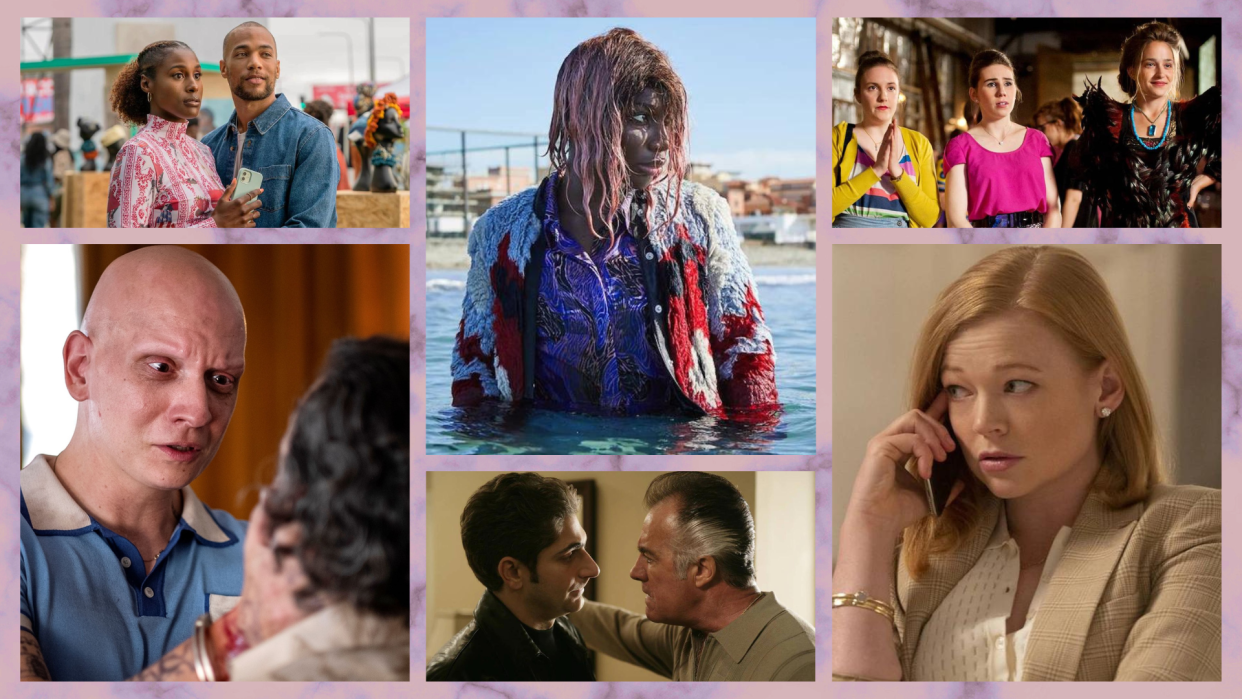
[Editor’s Note: this list was originally published in July 2017. It has been updated multiple times with new entries.]
Both on the awards circuit and in the public consciousness, HBO is widely regarded as among the first Hollywood heavyweights to recognize that television, as a medium, had the power to deliver sprawling, large scale stories on a smaller screen. From HBO’s ascent in the late 1990s through its dragon-aided roar across the 2010s, the network’s original series tackled universal stories, stretching across continents and decades.
More from IndieWire
The network hasn’t been without controversy, though. HBO faced questions about its lack of diversity in flagship series, including “Game of Thrones” and “Girls,” throughout the 2010s. And, unshackled from the restrictions of broadcast TV, the various steps the network took to push the limit of what’s allowed on screen garnered a fair share of pearl-clutching headlines; see “The Sopranos” in the ’90s and “Euphoria” just a few years back. And since the Warner Bros. and Discovery merger, there’s been many worries from TV fans about the impact it’s having on HBO’s future — especially with series like “Succession” and “Barry” concluding.
But overall, the network’s commitment to collaborating with talented filmmakers and inventive creators has earned them creative success that few of their rivals have been able to equal. Even as the age of prestige TV has blanketed the marketplace with plenty of other options, HBO’s newest shows have been able to stand out. “Barry,” “I May Destroy You,” “The White Lotus,” and “Mare of Easttown” are among the Emmy-nominated series carrying on HBO’s storied tradition with TV that captivates and compels.
Not including Max Originals (which have their own separate list): Here are 44 of the best TV shows HBO has ever had to offer.
Michael Schneider, Alison Foreman, and Steve Greene contributed to this report.
44. “Fantasmas”

A wonderfully droll and completely original bite-sized creation, “Fantasmas” is a pure distillation of creator Julio Torres’ imaginative artistic outlook. Across six half-hour episodes, Torres creates a vivid alternate-reality version of New York City that’s similar to our own, but queerer, freakier, and populated by a colorful cast of gig workers, ruthless capitalists, and starving artists looking for meaning in the chaos. The result blends the best of serialized comedy, with recurring figures and an overarching plot about Torres’ stand-in attempting to find fulfillment, and sketch comedy that swerves from musings on the nature of the letter “Q” to a stand-out parody of the “Real Housewives” franchise that imagines the women as the victims of a deranged manchild. —WC
43. “The Last of Us”

Video game adaptations have such a dismal reputation that “The Last of Us” just had to be okay to surpass historical precedent. Still, Craig Mazin and Neil Druckmann’s serialized adaptation of the latter’s beloved action game series impressed when it debuted in 2023 by succeeding not just “for a video game movie” but as a compelling drama in itself. Translating the cinematic influence of the original game’s post-apocalyptic story, the HBO series inevitably loses some sense of originality and intimacy in taking the interactivity out of Joel and Ellie’s adventure across the United States. Still, the first season — based on the original 2013 game — succeeded thanks to brilliant performances from Pedro Pascal as Joel and (especially) Bella Ramsey as Ellie, which gives the pair’s complex bond the weight it deserves, and through direction and filmmaking that vividly captures the broken world the two inhabit. While it veers a little too faithful to the source, the show succeeds when it makes departures, particularly in a standout episode starring Nick Offerman and Murray Bartlett as doomed lovers. —WC
42. “How To with John Wilson”
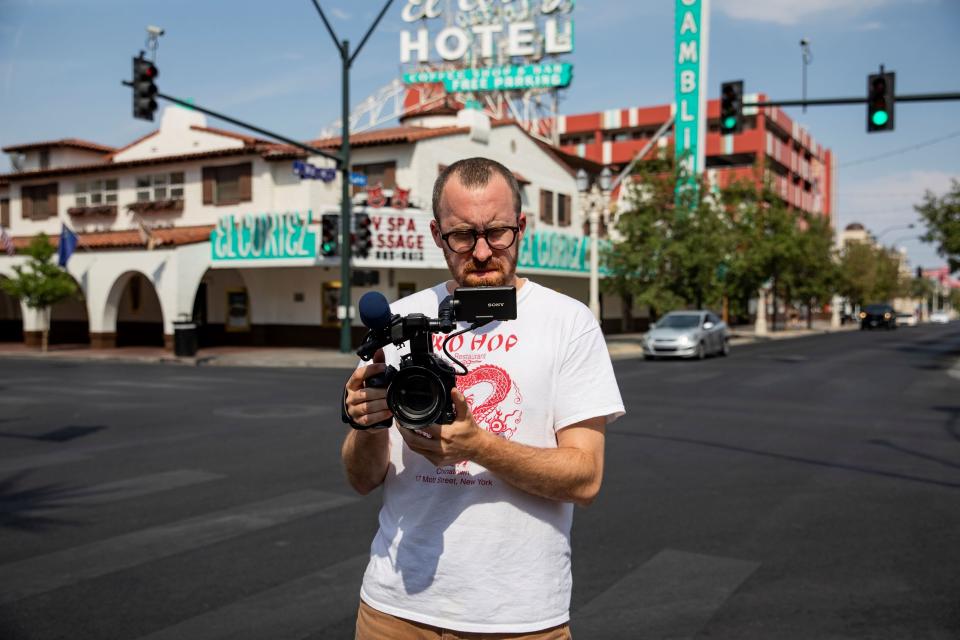
Each episode of “How To with John Wilson” is a standalone visual essay that starts small before going into broader and more poignant depths than you could possibly imagine. An installment can begin with a question about how to cook risotto or find a public restroom, before finding Wilson in Idaho at a conference discussing the Mandela Effect and ending with a discussion on the importance of living in the moment or letting go of your fears. At the center of the series is Wilson’s loving portrait of New York, which he depicts with an observant B-Roll of all its nooks and crannies and interviews with some of the oddest inhabitants you could ever find, and the question of how to build community in an increasingly fractured world. It sounds heavy, and it can be, but “How to With John Wilson” is also just terrifically entertaining, filled with unexpected non-sequiturs and cringe comedy filtered through Wilson’s persona as an awkward, schlubby narrator. It’s a series of essays, but the show never feels like homework. —WC
41. “Industry”

After a shaky first season, “Industry” leveled up significantly in its sophomore outing, between sharp new characters, deeper writing for the central ensemble of four young investment bankers, and a more confident mix of the soap opera sexual entanglements and “Succession” lite cold-hearted business dealings that gives the show its own distinctive rhythm. But the secret to the sauce of Mickey Down and Konrad Kay’s London-set series is that even when the scripts aren’t at their peak, the amount of adrenaline pumped into every episode makes it impossible to look away. A lot of that is due to the excellent, nervy performances from Myha’la Herrold and especially Ken Leung as the show’s leads, ruthless wheelers and dealers who behave as if every stock investment is a life or death battle. Another factor is the show’s admirable willingness to throw the viewer into the deep end of the finance world, peppering the script with technical terms and business jargon that’s hard to decipher but exhilarating to hear the cast spit out at each other. Mostly, it’s the show’s indelible portrait of the finance sector, as a warzone where people need to stoop to horrific lows to get ahead, that makes “Industry” such a consistent half-trash, half-prestige delight. —WC
40. “The Rehearsal”
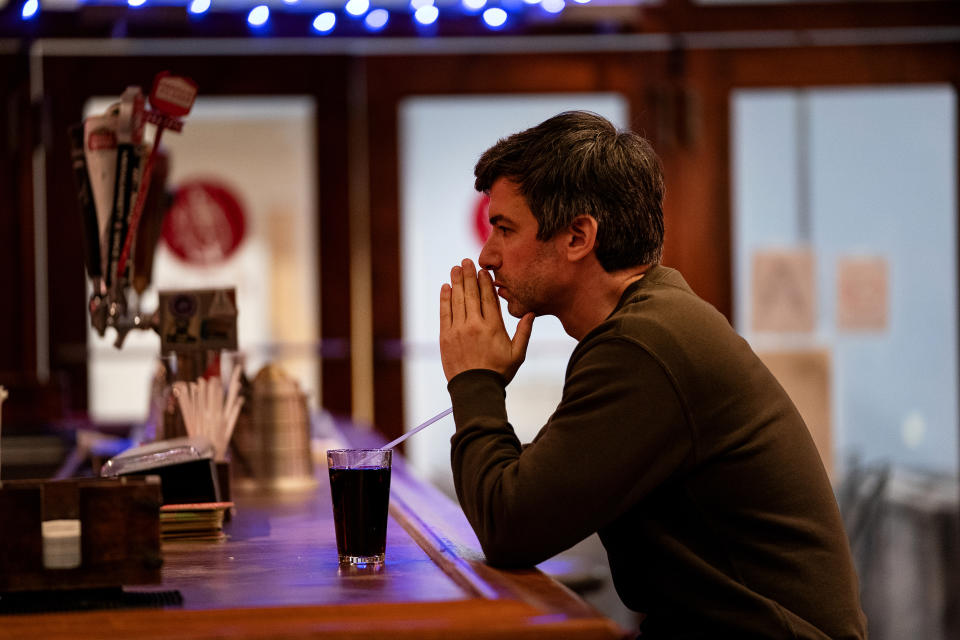
A confounding, bizarre experiment, “The Rehearsal” got everyone talking when it premiered in Summer 2022, launching meme after meme about the various stunts creator and host Nathan Fielder gets into over its six-episode first season. Ostensibly a series about Fielder staging “rehearsals” for big life events in order to help ordinary people prepare for the unexpected, “The Rehearsal” gets so much weirder and more personal that that initial premise, as Fielder begins staging rehearsals for rehearsals and involving himself directly in the story. Is the show’s treatment of its real-life subjects one hundred percent ethically above board? The jury will (likely always) be out on that. But the show recognizes that reality, and provides one of the queasiest but most fascinating TV experiences in recent memory. —WC
39. “OZ”
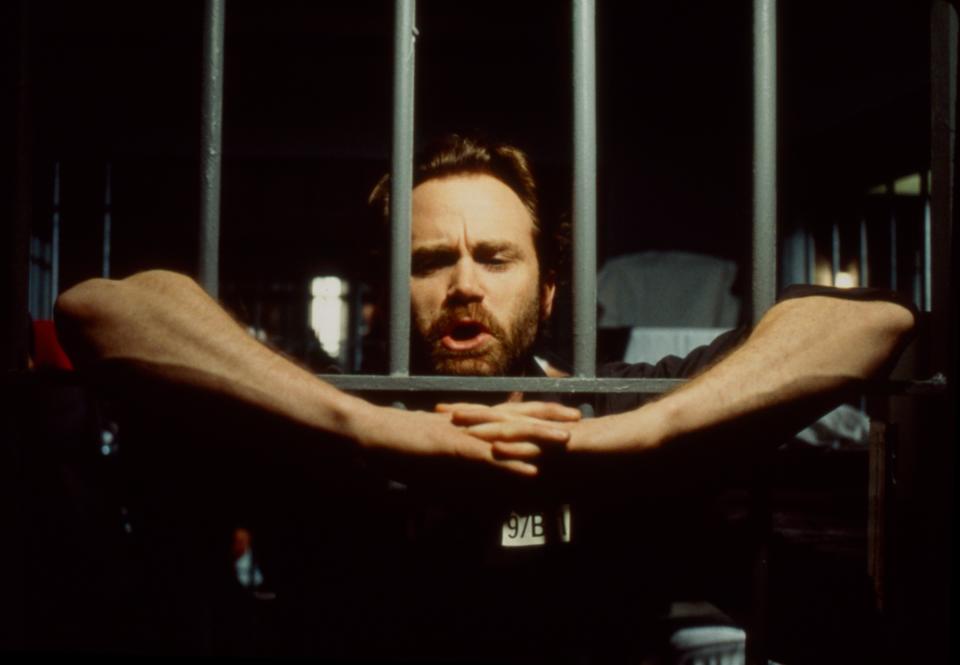
Although “The Sopranos” gets most of the credit for making HBO the place for edgy, artful TV, prison melodrama “Oz” deserves its flowers as the show that paved the way. The channel’s first one-hour TV drama, Tom Fontana’s 1997 show was set in an experimental, rehabilitative wing of the Oswald State Penitentiary, where several colorful inmates from different backgrounds engage in drug trade, gang wars, fight each other, or fall in love. Boasting brilliant performances from the large ensemble cast — including Harold Perrineau, J. K. Simmons, Lee Tergesen, Christopher Meloni, and Rita Moreno — the series remains an underappreciated, compulsively watchable drama decades after it broke ground. —WC
38. “Olive Kitteridge”

Adapted from Elizabeth Strout’s 2008 novel, “Olive Kitteridge” significantly streamlines the original text — essentially a series of short stories about the people in the life of the title character — to focus more squarely on its protagonist. Thankfully, Kitteridge is played by Frances McDormand in one of her best performances. A depressed retiree in the Maine town of Crosby, the four-part series tracks Olive’s life over a 25-year period, as her relationships with her husband Henry (Richard Jenkins), son Christopher (John Gallagher Jr.), and friends grow and change. The series won eight Emmys, including Best Limited Series and acting wins for Jenkins and McDormand. —WC
37. “Mildred Pierce”
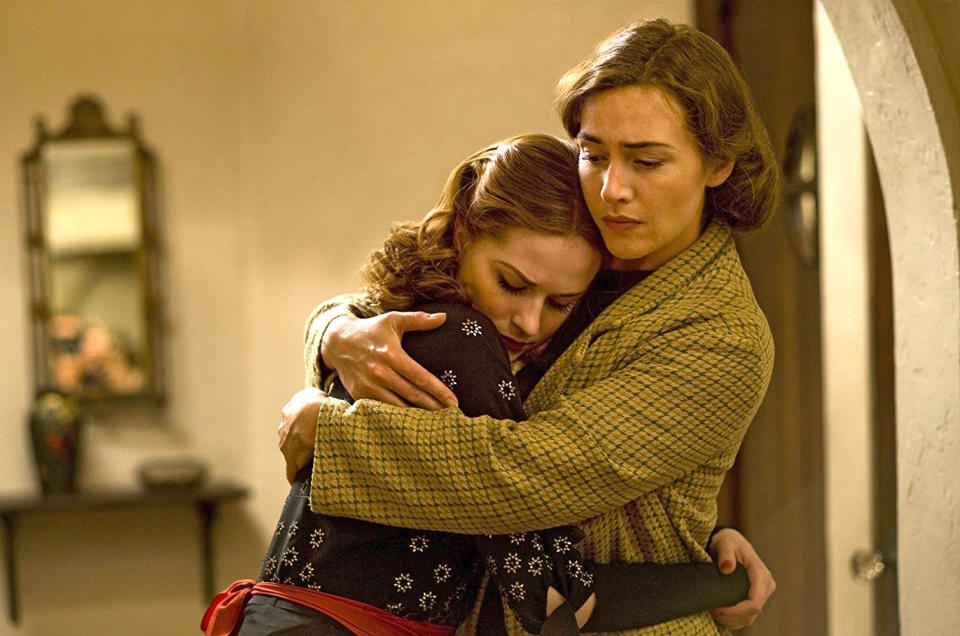
It takes guts to readapt a book that’s already been turned into a classic film, but Todd Hayes did just that when he wrote and directed a limited series adaptation of James M. Cain’s “Mildred Pierce” back in 2011. The 1945 Michael Curtiz adaptation of the novel is a classic featuring Joan Crawford in one of her defining film roles, but significantly changes the structure of the story to transform a psychological drama into a film noir. Hayes’ adaptation is significantly more faithful, featuring Kate Winslet in the title role. A hard-working mother in the Great Depression, Mildred struggles to care for her family when her husband loses his job, opening a restaurant and falling in love with a new man (Guy Pearce, wooing Winslet a few years before “Mare of Easttown”), while struggling to navigate her relationship with her spoiled and selfish daughter (Evan Rachel Wood). Winslet and Pierce both received Emmy Awards for their work in the miniseries. —WC
36. “Fraggle Rock”
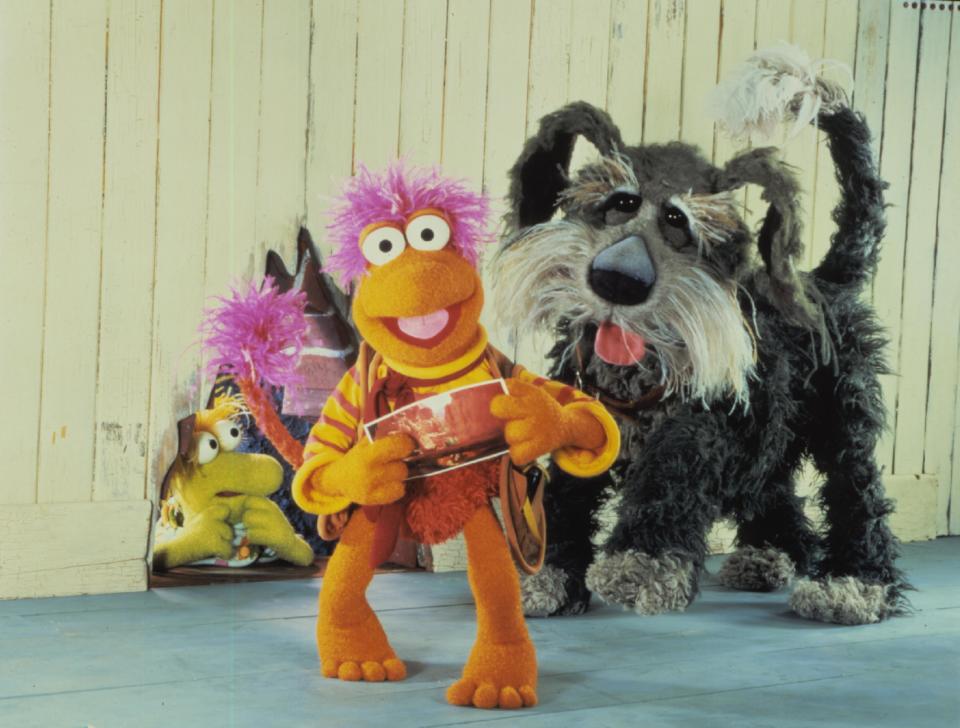
The Jim Henson series might be considered the “HBO starter drug” for a generation of viewers, now in their 40s, who came of age in the 1980s. Fraggles are mostly carefree creatures with different personalities, led by the characters Gobo, Red, Wembley, Mokey and Boober. They sing, they play, they eat structures built by Doozers, they steal radishes from the Gorgs, and seek answers from the enlightened Marjory the Trash Heap. Out in the real world, Doc and Sprocket were the gateway for the Fraggles to “outer space.” The Fraggle world lived on with the Hulu animated series “The Doozers” from 2014 to 2018. —MS
35. “True Detective”
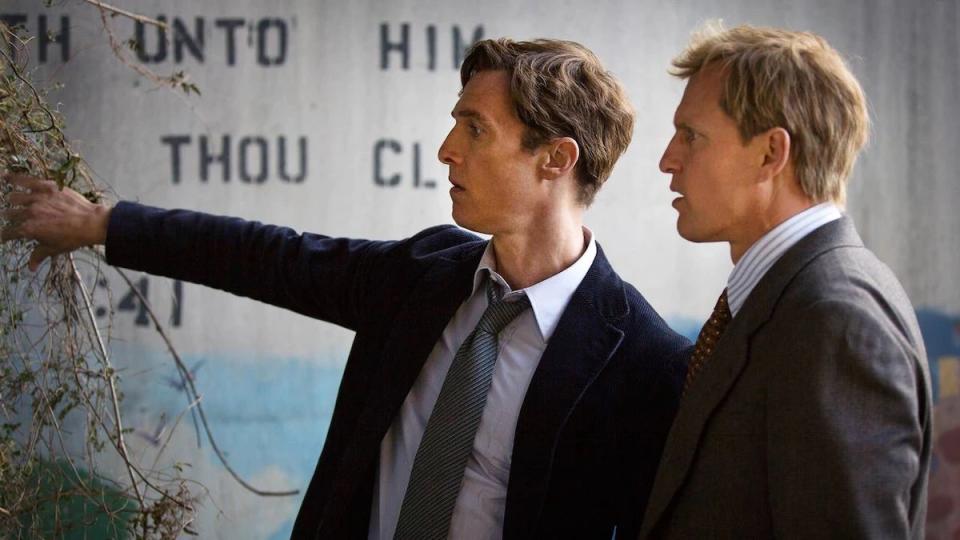
Although “True Detective” is an anthology — rotating casts, settings, and plots each season — there’s an eerie familiarity to the nightmarish journeys the crime show has taken thus far. In the first season, Matthew McConaughey and Woody Harrelson are Louisiana detectives investigating a series of killings seemingly related to the occult. Rachel McAdams, Colin Farrell, Vince Vaughn, and Taylor Kitsch lead the second season, as California cops looking into corrupt politicians. Finally, Mahershala Ali leads the third season as a detective in the Ozarks looking for two missing children. A fourth season starring Jodie Foster is expected in 2023. —AF
34. “Euphoria”
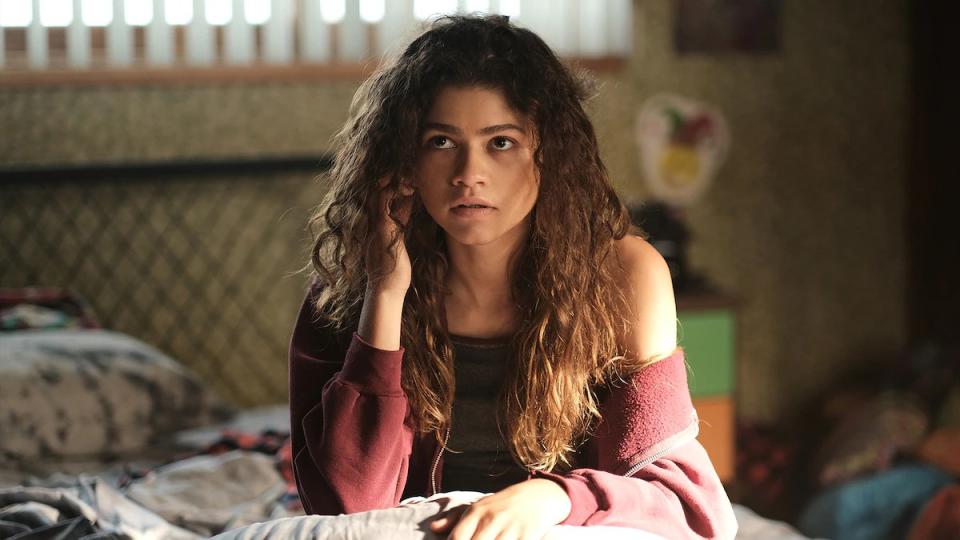
Based on the Israeli series of the same name, Sam Levinson’s “Euphoria” takes the more is more approach to twisted teen dramedy. Zendaya stars as a high school-aged drug addict named Rue, whose struggles with mental health and grief ground an otherwise chaotic kaleidoscope of social media-fueled coming-of-age angst. “Euphoria” is first and foremost celebrated for its moody soundtrack and arresting aesthetic, with its costuming and makeup honored by the Emmys and fashion world writ large. Despite a rocky second season, Zendaya and the rest of the “Euphoria” cast continue to earn top praise for their performances with special attention paid to series regulars Sydney Sweeney, Jacob Elordi, Angus Cloud, and Hunter Schafer. —AF
33. “Game of Thrones”

Even with a head start as rich as George R. R. Martin’s novels, translating the dense mythology of this fantasy behemoth to the world of TV was an unprecedented undertaking, creating entire cities and species from the ground up on a mammoth scale. In the process, that attention to detail and willingness to forge new directions for these characters kept the series grounded in ways that kept viewers in dragon-free zones hooked week after week. In a fractured entertainment environment, the mere existence of “Game of Thrones” as an all-consuming, quadrant-crossing hit was something of a minor miracle. Even as the show faltered in its home stretch (at least according to some), the impending spinoff series lets the Westeros legacy live on. —SG
32. “Last Week Tonight with John Oliver”
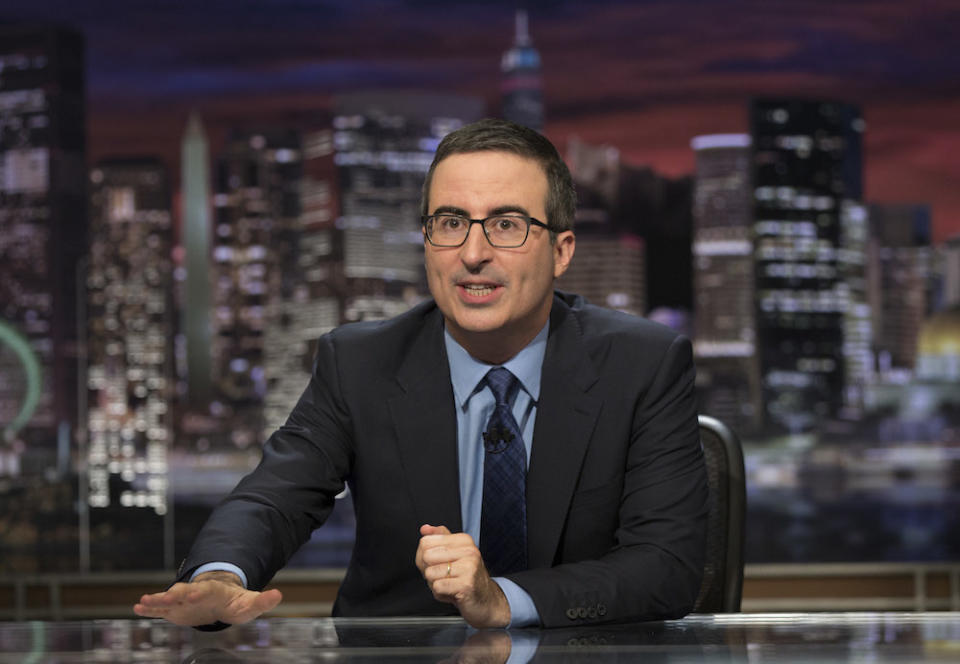
Even before the never-ending news cycle became an apocalypse-focused monoculture, “Last Week Tonight” provided a valuable service by directing the late-night focus away from the front page. With segments on pressing issues as disparate as net neutrality, multi-level marketing schemes, mandatory minimum sentencing, gerrymandering, and infringement on LGBTQ rights, John Oliver and company have produced far more than the “evisceration” they often get headlines for (something Oliver himself has poked fun at). Using the show’s distinct viewpoint to punch up rather than tred on easy targets, it’s political-themed comedy that offers something constructive to our national discourse, all while managing to slip in dogs who look like Supreme Court justices for good measure. —SG
31. “Big Love”
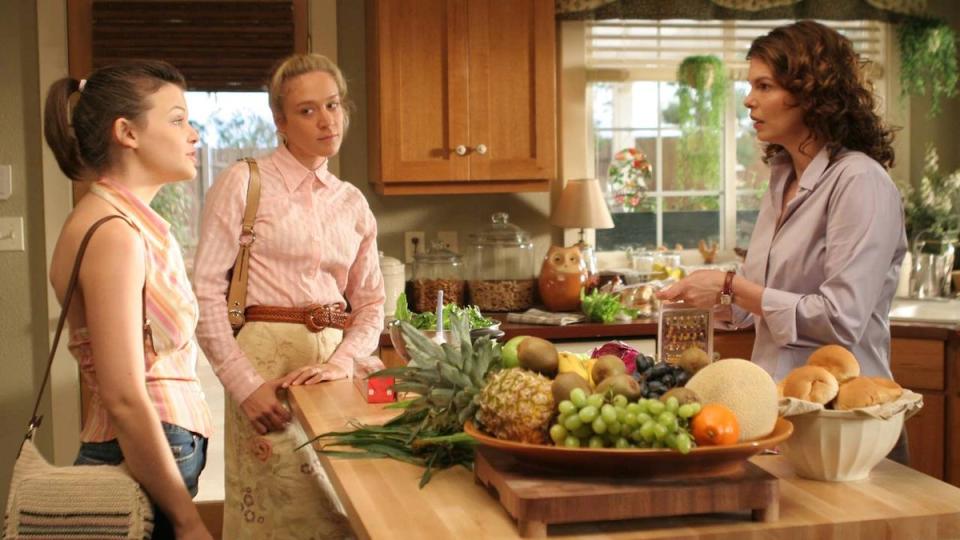
Bill Paxton plays a polygamist wrestling with the complications of married life in HBO’s “Big Love.” Set in a fundamentalist Mormon community in aughts Utah, the drama series ran for five seasons from 2006 to 2011 and was praised for its tight writing and emotional performances. Created by Mark V. Olsen and Will Scheffer, “Big Love” commingled the high-stakes intensity of religion and politics with the intimate family drama of three sister wives sharing a backyard and the household responsibilities therein. Played by Jeanne Tripplehorn, Chlo? Sevigny, and Ginnifer Goodwin, the three main wives grounded the series, which would earn nine Emmy nominations. —AF
30. “The Jinx”
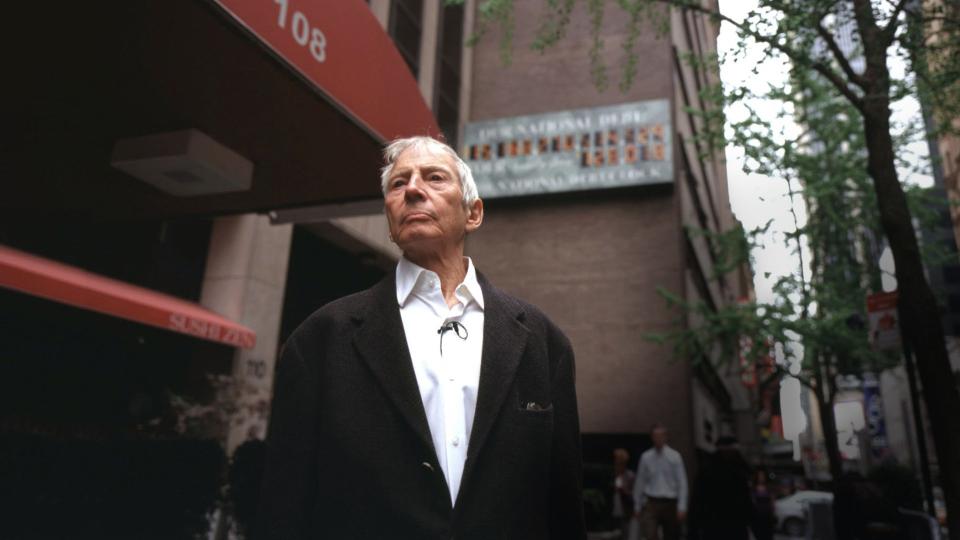
“The Jinx” kicks off with a criminal trying to get caught. If Andrew Jarecki’s journey into the mind of late murderer Robert Durst was only an unpacking of that single idea, it would have still been compelling TV. That this true-crime docuseries also uncovers plenty of unexpected discoveries not just about Durst, but about the ethical nature of the proper reporting process of homicides makes it a watershed moment of the “Serial” boom. “The Jinx” doesn’t skimp on the brutality of these crimes, showing them in full detail so that an unsuspecting audience has a better understanding of the severity of the murders described. Ultimately, it’s a gripping examination of the power of trauma and how the cycle of violence can be perpetuated before we even realize it. [Editor’s note: Plus, “The Jinx” helped get Durst convicted in 2021.] —SG
29. “The White Lotus”

Shot at a real Hawaiian resort during the COVID-19 pandemic, season one of Mike White’s “The White Lotus” kicks off with the mysterious death of someone at a five-star resort. Who died, how, and why? Dripping with dramatic irony, these questions fuel the extraordinarily bingeworthy six-part dramedy that earned the show five Emmy nods, including Outstanding Limited Series. In fact, the limited series was so outstanding it’s no longer limited at all, having gone the way of “Big Little Lies” and been green-lit for an Italian-set second season. —AF
28. “Mare of Easttown”
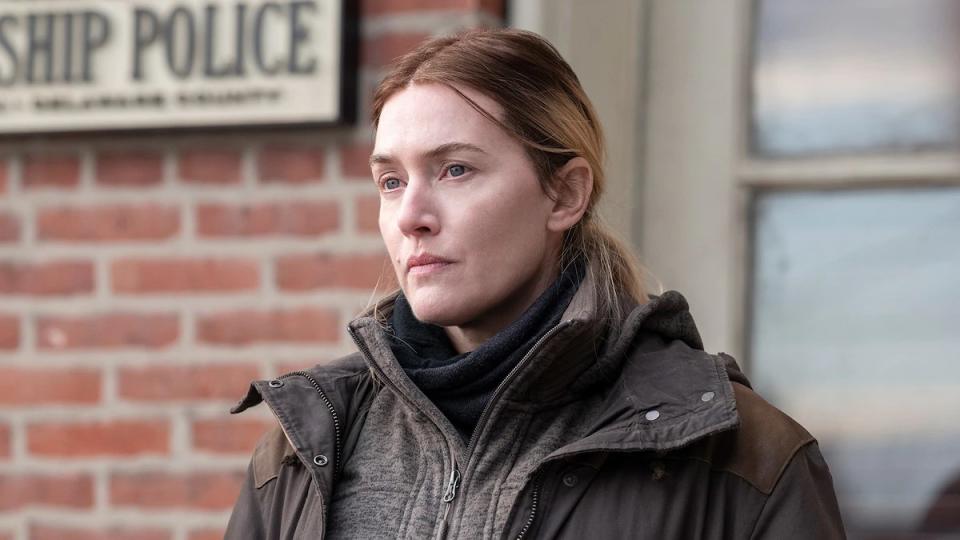
Kate Winslet stars as title character Mare in Brad Ingelsby’s harrowing crime thriller about a beleaguered Philadelphia detective grappling with an unsolved case. Equal parts absorbing character study and slow-burn whodunnit, the stark series boasts not only an incredible knack for creating suspense but also a consistent commitment to following those threads somewhere satisfying. “Mare of Easttown” earned six Emmy nominations, winning Outstanding Lead Actress for Winslet; Outstanding Supporting Actor for Evan Peters; and Outstanding Supporting Actress for Julianne Nicholson. —AF
27. “Big Little Lies”
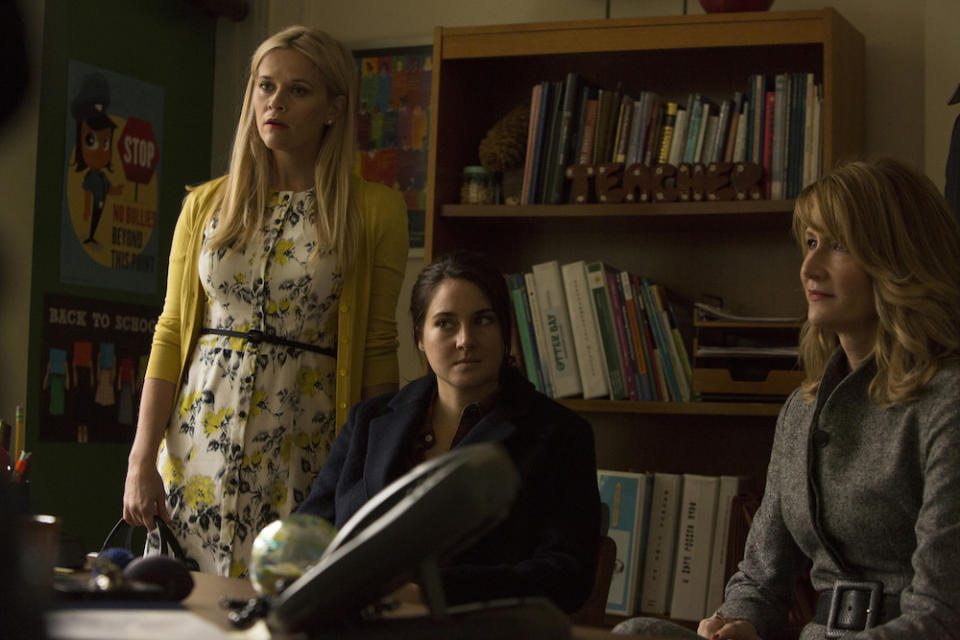
Whodunits so often get overrun by the juiciness of their premises. Not so for Jean-Marc Vallée and David E. Kelley’s 2017 adaption of the Liane Moriarty novel, which crafts a central California community of intrigue and looks for the more nuanced story behind the death that sets off the series. The show’s central quartet (played by Reese Witherspoon, Nicole Kidman, Shailene Woodley, and Laura Dern) each bring a dynamic thread to the fabric of this seaside town and the children whose actions become a focal point for the story. While the series left off as a strong, standalone piece of TV craftsmanship, it’s a testament to how well this blend of visual style and otherworldly performances captured audience’s imaginations that Season 2 happened (and with Meryl Streep in tow, no less). —SG
26. “Real Sports with Bryant Gumbel”
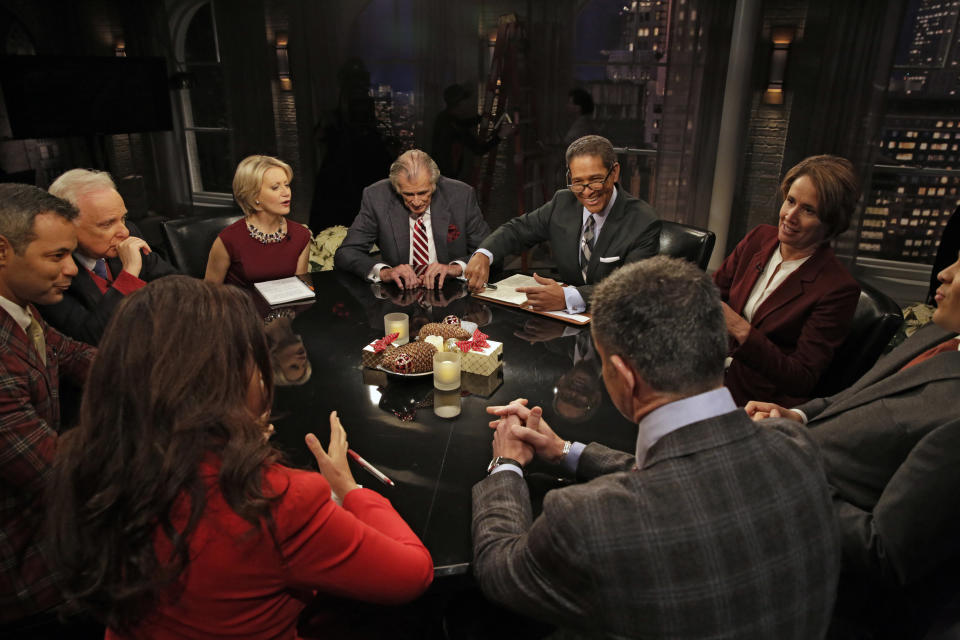
In a changing landscapes that has an increasingly smaller space for TV newsmagazines, “Real Sports” has consistently found a way to bring vital stories from the sports world to a wider consciousness. Anchored by some of the industry’s strongest voices, these reports go beyond human interest stories to uncover the hidden side of iconic institutions or put a face to stories only previously whispered in off-the-record circles. Recent pieces on college athletics, youth football leagues, domestic violence issues and traffic deaths in the Dominican Republic continue a two-decade tradition of offering insight into lives beyond the highlight-reel regulars. Thorough, provocative and far-reaching, it’s a series with a persistence and consistency, a model for similar journalistic endeavors. —SG
25. “Silicon Valley”
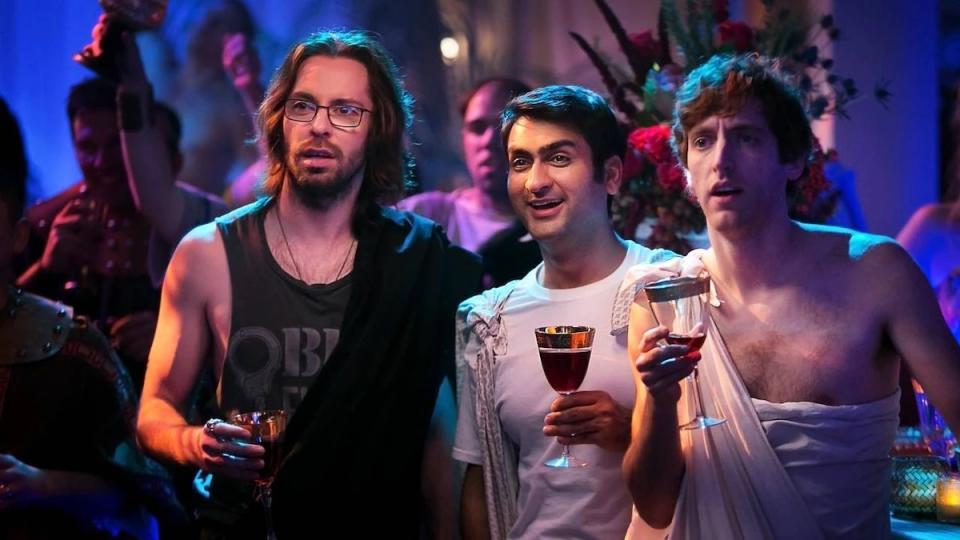
If Mike Judge made “Silicon Valley” now, it would have to be totally different. So treat yourself. Seriously, turn off your phone, suspend any concerns you might have about the downfall of humanity, and instead revel in the strange optimism of this somehow already dated 2010s sitcom about misfit programmers trying to make it in big tech. Thomas Middleditch, Kumail Nanjiani, T.J. Miller, Josh Brener, Amanda Crew, Zach Woods, Jimmy O. Yang, Martin Starr, and more appear. —AF
24. “Six Feet Under”
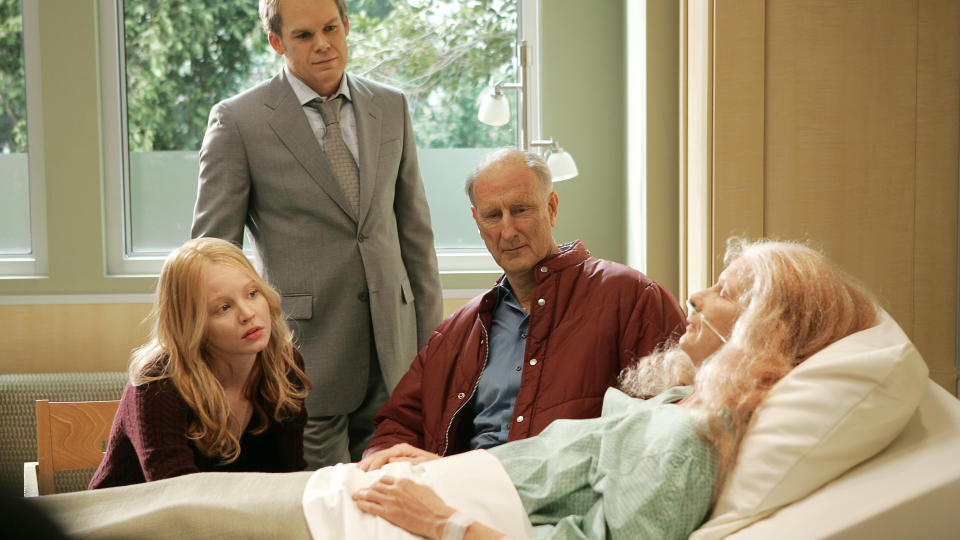
Alan Ball’s opus about family, life, and loss is probably best known for how it tackled the subject of death. “Six Feet Under” centered on the lives of brothers Nate (Peter Krause) and David (Michael C. Hall) Fisher, who run the family funeral parlor after the death of their father. Frances Conroy, Lauren Ambrose, Freddy Rodriguez, and Rachel Griffith also starred in the series as characters all searching for their own personal truths. As the Peabody Awards wrote when honoring the show in 2002: “Created by producer/writer Alan Ball, the strange yet strangely familiar world of the Fishers and their assortment of friends and companions, lovers and clients, deals with the most fundamental human experiences. The face the celebration of life and the loss of life, the joy of love and the pain of love, the struggle for understanding—and the headlong crash into confusion. Here, dreams, memories and neuroses intersect, remind us that those who pass are never fully lost.” —MS
23. “Looking”
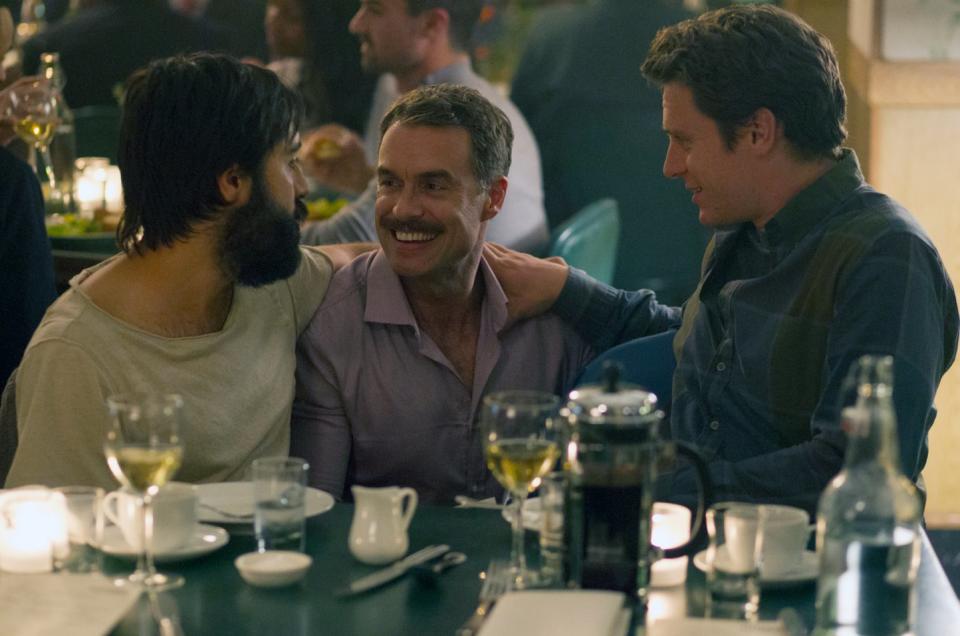
HBO has had its share of bombast over the past few decades, but “Looking” is an example of the network doing quieter stories with even more profound impact. Seeing the world of San Francisco through the eyes of three friends, all navigating their respective professional and personal challenges, the show was able to intertwine these individual experiences with the city it was set in. Under the watchful eyes of Andrew Haigh, Michael Lannan and a revolving door of talented independent filmmakers, this small group showed a diversity of ambition and desires from life, but never lost sight of the friendship that kept these men together. Over two seasons and a feature-length coda, “Looking” made drag clubs, bathhouses, Halloween parties, and tech offices each come alive with the specificity and care that comes with documenting the search for love, acceptance, and companionship. —SG
22. “The Comeback”
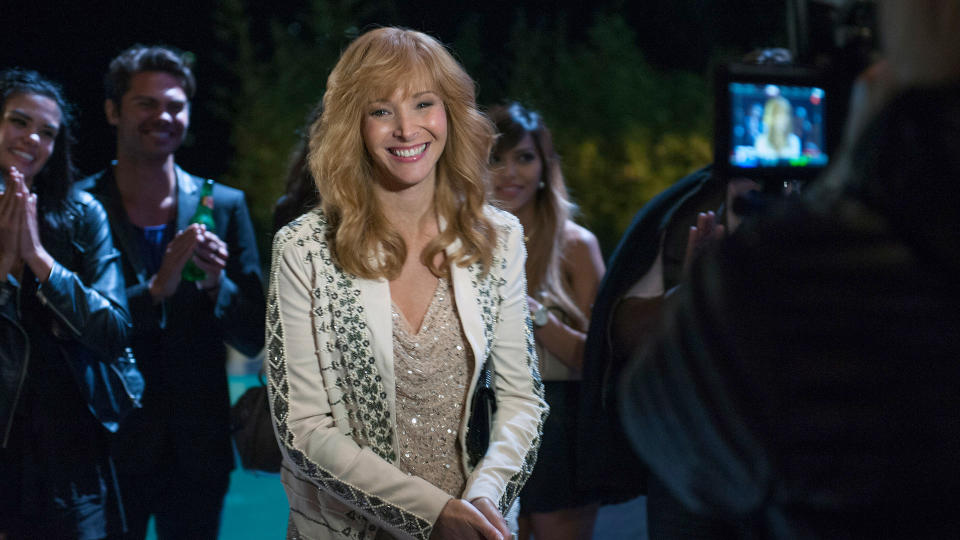
“Sex and the City” writer/director Michael Patrick King moved on from that show to immediately create another HBO classic, this time with former “Friends” star Lisa Kudrow. “The Comeback” introduced the world to Valerie Cherish, a washed-up sitcom actress who is followed by a reality TV camera crew as she lands a role on a new network comedy. “The Comeback” made a comeback of its own in 2014, when a second season premiered nine years later, and was just as awkward, brutal, heartbreaking and beautiful as ever. —MS
21. “Sex and the City”
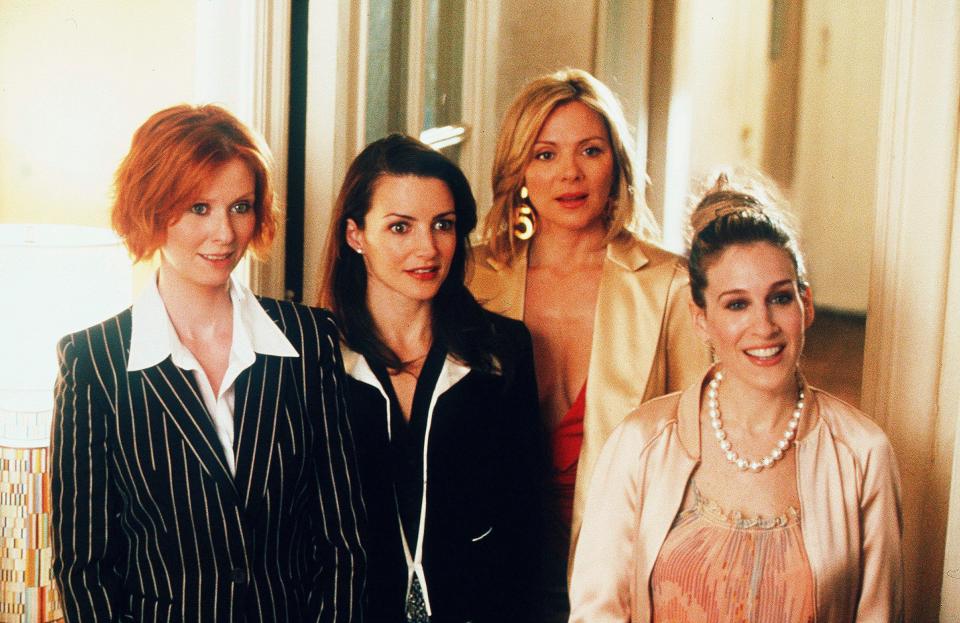
“Sex and the City” aired on HBO roughly the same time as “The Sopranos,” giving HBO a one-two punch in drama and comedy that turned the premium service into a powerhouse. The series, based on Candace Bushnell’s book, became a pop culture phenomenon, inspiring cocktail parties, cupcake runs and millions of people to proclaim whether they were a Carrie (Sarah Jessica Parker), Samantha (Kim Cattrall), Miranda (Cynthia Nixon) or Charlotte (Kristin Davis). The revolutionary series (created by Darren Star and later overseen by Michael Patrick King) was lauded for its portrayal of strong, complicated women in their late 30s and early 40s who freely discussed relationships, sex, gender, friendship, career, family, and more. “Sex and the City” won four Primetime Emmy Awards, including Outstanding Comedy Series in 2001. Parker, Nixon, and Davis reprised their roles in HBO Max’s “And Just Like That…” —MS
20. “Los Espookys”
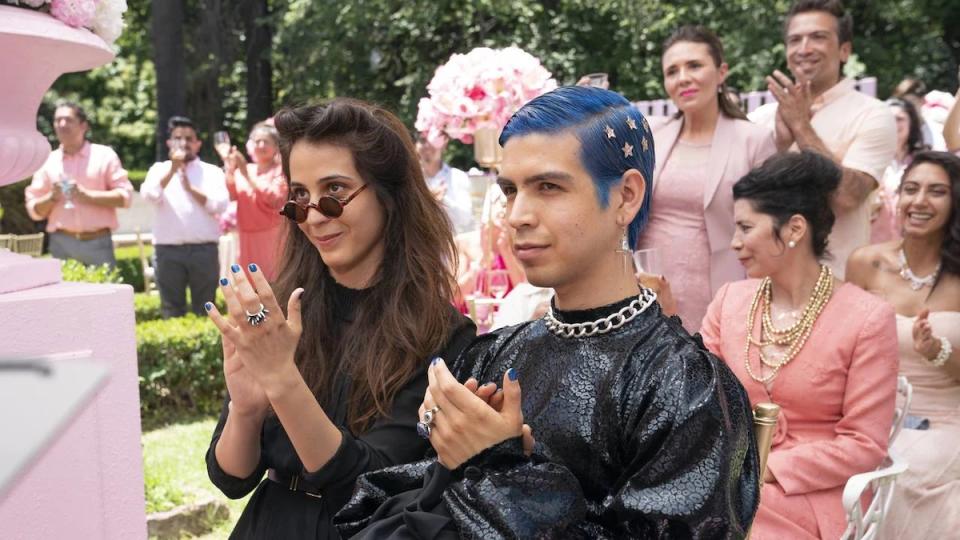
Not especially scary but particularly perfect for horror lovers, “Los Espookys” is a fantastically funny comedy series about a group of friends whose fondness for terror spurs them to start a strange new business. Created by Julio Torres, Ana Fabrega, and Fred Armisen, “Los Espookys” stars its creators as well as Bernardo Velasco, Cassandra Ciangherotti, Carol Kane, and José Pablo Minor.
“Clocking in at six episodes, the first season moves well, gets the details right, and packs in the laughs at every turn,” writes IndieWire’s Ben Travers. “It’s never scary, and even its appreciation of a good scare, which leads to a gross-out gag or two, keeps the focus on the craft talent who made it happen.” —AF
19. “Mr. Show with Bob and David”
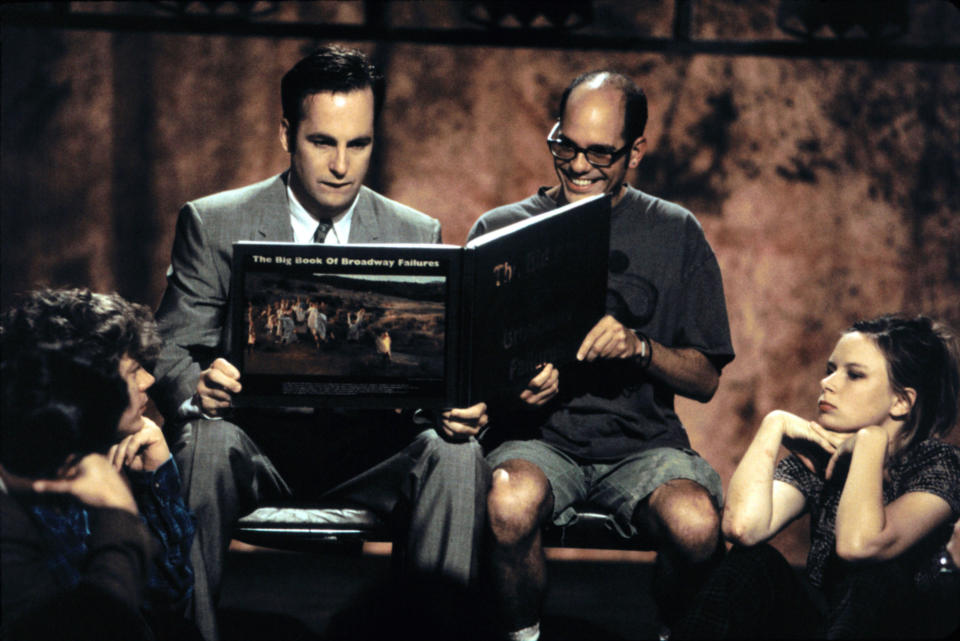
“Cheers” is probably your favorite comedian’s favorite comedy, but among the other American outputs from last quarter century, few shows lay claim to a similar spot in the hearts of comedy nerds more than “Mr. Show.” Bolstered by the two men up top and a bevy of supporting players who would go on to have influential places of their own in the comedy world, few sketch shows have been able to create comedic shorthand in quite a way that this show did. Sketches like “The Story of Everest,” rival mayo and mustard commercials, and “The Audition” not only showed off David Cross and Bob Odenkirk’s comedic range, they challenged the standard format. Bending time, nesting narratives, and embracing the absurdities of everyday life, “Mr. Show” used the freedom of pay cable to usher in a new era of laughs.
18. “Insecure”
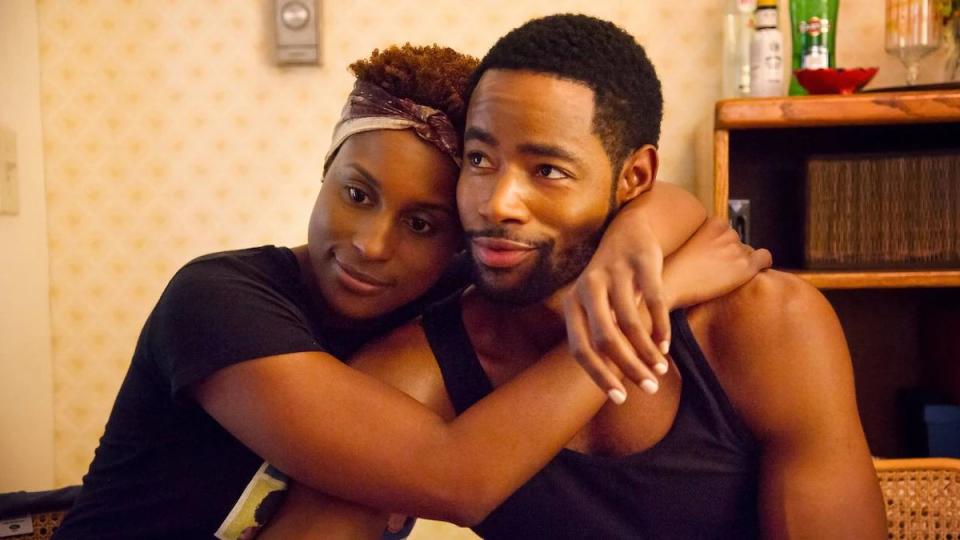
“Insecure” exists as a TV landmark of two kinds. First, it paved critical new ground at HBO for Black stories, spotlighting the friendship of two Black women living in SoCal across five impeccable seasons. Second, it solidified creator/multi-hyphenate Issa Rae’s reputation as an auteur of the 21st century, letting her sparkling dynamic with co-star Yvonne Orji ground the show. Lisa Joyce, Natasha Rothwell, Jay Ellis, Dominique Perry, and more complete the sensational “Insecure” cast. —AF
17. “Deadwood”
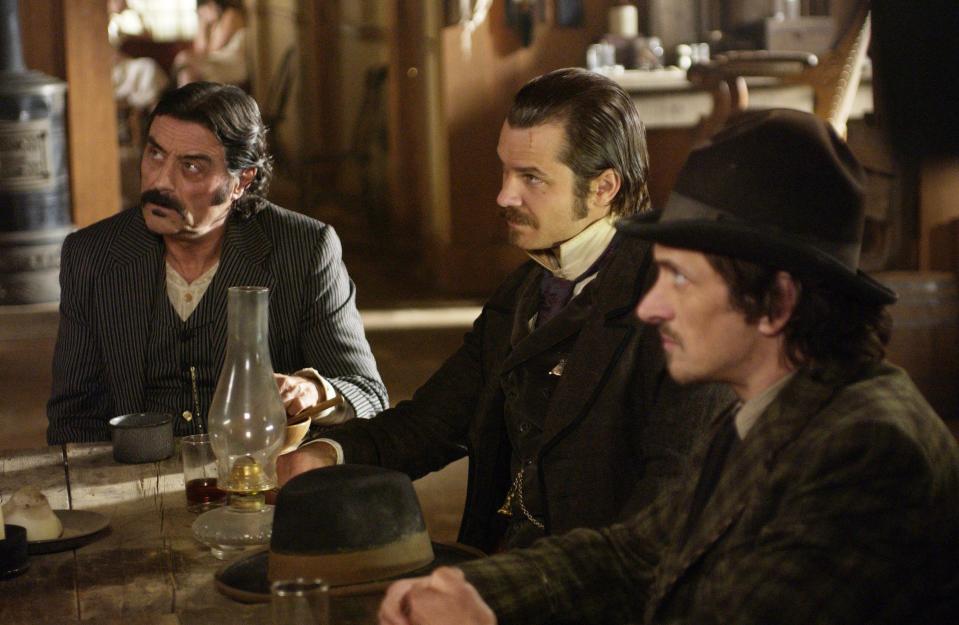
David Milch’s 36-episode opus, which chronicled the growth of a South Dakota outpost in the 1870s, was lauded at the time for its take on civilization and capitalism — and remembered for its colorful, and frequent, use of profanities. Milch weaved real-life characters and fictional storylines together, casting Ian McShane as saloon owner Al Swearengen: a role that earned the actor an Emmy nomination. “Deadwood” is considered one of the most lamented TV cancellations of the modern era, but got a much-anticipated movie in 2019. —MS
16. “Curb Your Enthusiasm”
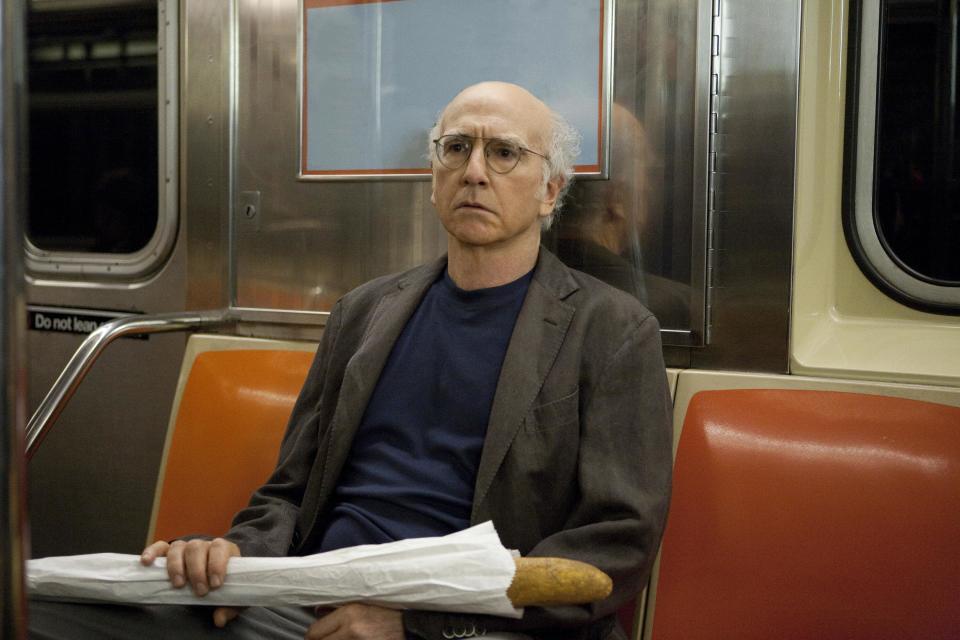
Other shows have mixed improvisation with scripted outlines, but no show has ever done it more masterfully than Larry David’s “Curb Your Enthusiasm.” The show first premiered in 2000, and quickly established David – then mostly known as the co-creator behind “Seinfeld” — as a star in his own right. The cantankerous David’s social faux pas and quick-tempered take on everyday inconveniences became a hallmark of the show, and over time have led to plenty of cringe-worthy and hysterically iconic moments. “Curb” had been on hiatus since 2011, but returned for its long-awaited revival in 2017 and again in 2020.
15. “Angels in America”
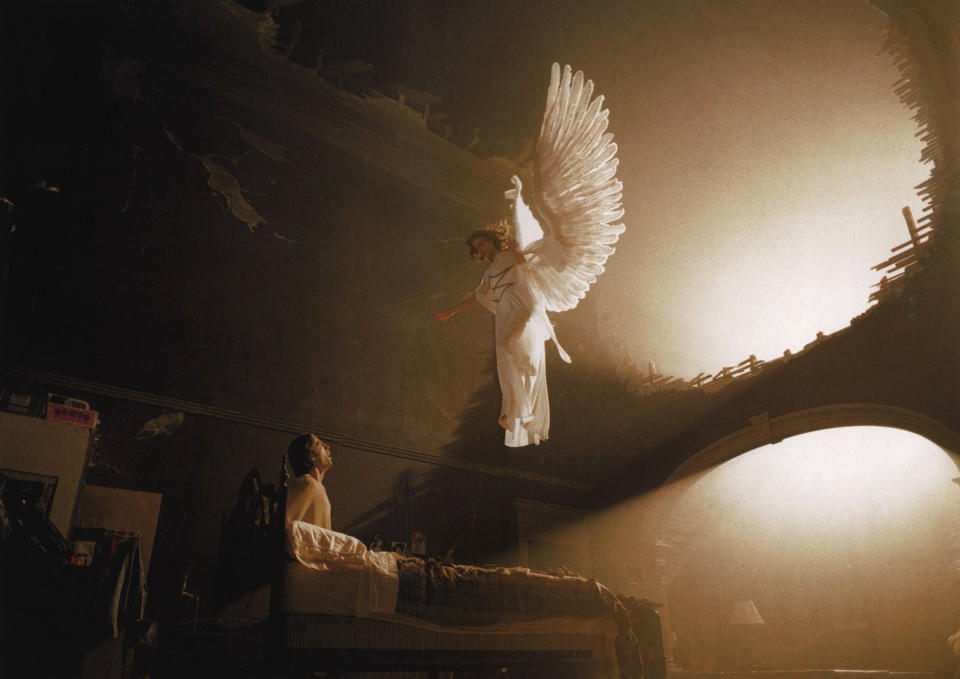
It took more than a decade, and several starts and stops, for “Angels in America” to finally get produced. But ultimately, the pieces fell into place just right, with Mike Nichols directing the six-hour miniseries and HBO splitting it into two three-hour parts: “Millennium Approaches” and “Perestroika.” Based on the Tony Kushner play, “Angels in America” starred Al Pacino as Roy Cohn, the real-life conservative (and closeted) lawyer who worked to have accused spies Julius and Ethel Rosenberg executed in the 1950s, and later contracted AIDS, dying in 1986. The cast also included Meryl Streep, Patrick Wilson, Emma Thompson, Mary-Louise Parker, James Cromwell, Jeffrey Wright, and Justin Kirk. Nichols, Pacino, Streep, Wright, and Parker all won Emmys for “Angels in America,” which was also named Outstanding Miniseries in 2004. —MS
14. “Girls”
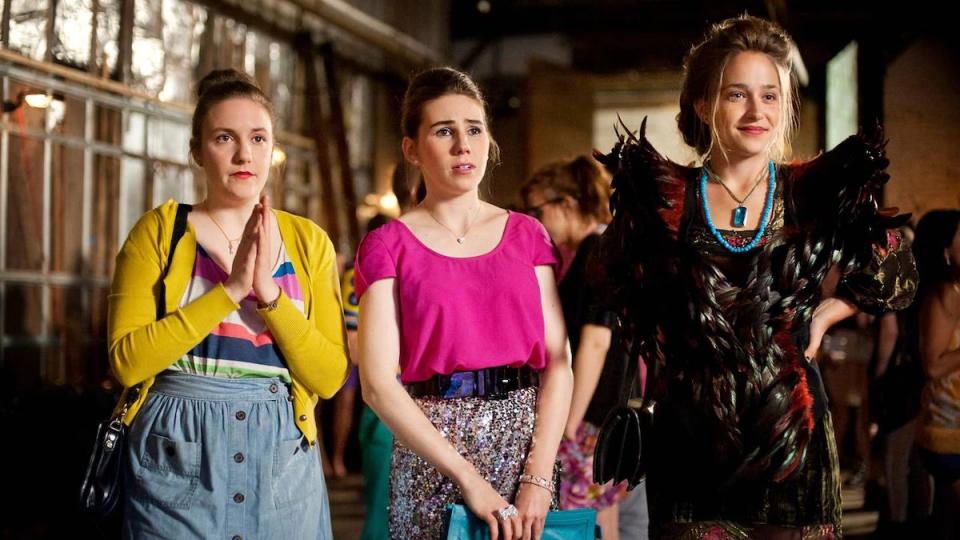
Lena Dunham left an indelible mark on TV with the captivating complexity hidden behind the simply monikered “Girls.” Starring Dunham as a fictionalized version of herself, the New York-set series follows Hannah: a twenty-something grappling with ambition, isolation, and mental health in an increasingly demanding world. Allison Williams, Jemima Kirke, Zosia Mamet, Andrew Rannells, Adam Driver, and Alex Karpovsky bring fearless life to Hannah’s friend group, imbuing the exacting script with raw energy and fraught passion. The series won the Golden Globe for Best TV Comedy in 2013, and was a regular contender in the Emmys’ acting race. —AF
13. “The Righteous Gemstones”

HBO was first graced with the comedy stylings of Danny McBride in “Eastbound & Down” and “Vice Principals.” But “The Righteous Gemstones” — a stupidly entertaining dark comedy about a family of fabulously wealthy televangelists — finally blessed the creator with the production scale and budget needed to preach his goofy gospel from heavenly new heights. John Goodman plays the patriarch, with McBride, Edi Patterson, and Adam Devine portraying his adult kids. Tony Cavalero, Dermot Mulroney, Gregory Alan Williams, Cassidy Freeman, Syler Gisondo, Tim Baltz, Walton Goggins, and more fill out the congregation-sized cast. —AF
12. “Veep”
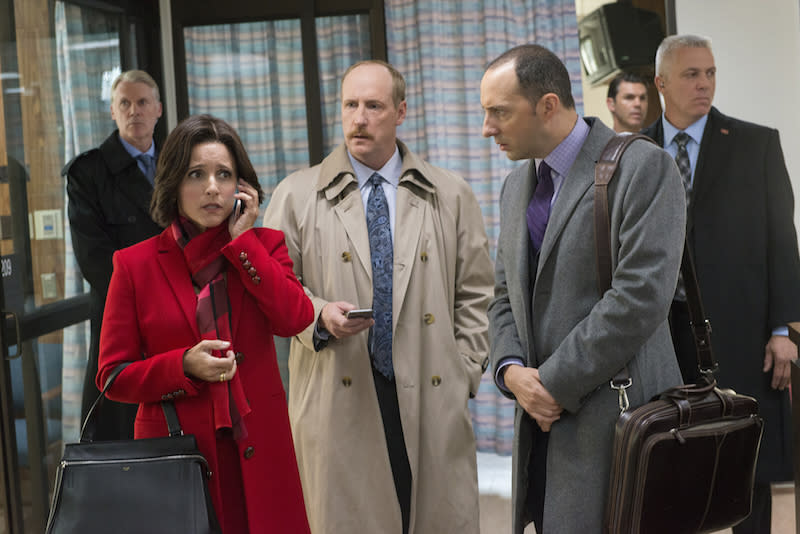
After seven sensational seasons, “Veep” still stands as TV’s greatest tribute to failing upwards. Between (Vice) President emeritus Selina Meyer and her flotilla of dysfunctional staffers, this series demonstrated that D.C. isn’t just a place of murderous Majority Whips (hello, “House of Cards”), but a bubble where unqualified individuals have a way of finding their way to the top. What these people lack in policy nuance and media savvy, they make up for in the nastiest, most vicious one-liners this side of the Atlantic. Through the guidance of show creator Armando Iannucci and later under the supervision of David Mandel, the show refined insults into an artform. It helps to have a cast full of profanity Picassos, from Julia Louis-Dreyfus, all the way through Timothy Simons, Kevin Dunn, Dan Bakkedahl, and a legion of the slimiest characters our (fictitious) nation’s capital has ever had to offer. —SG
11. “Room 104”
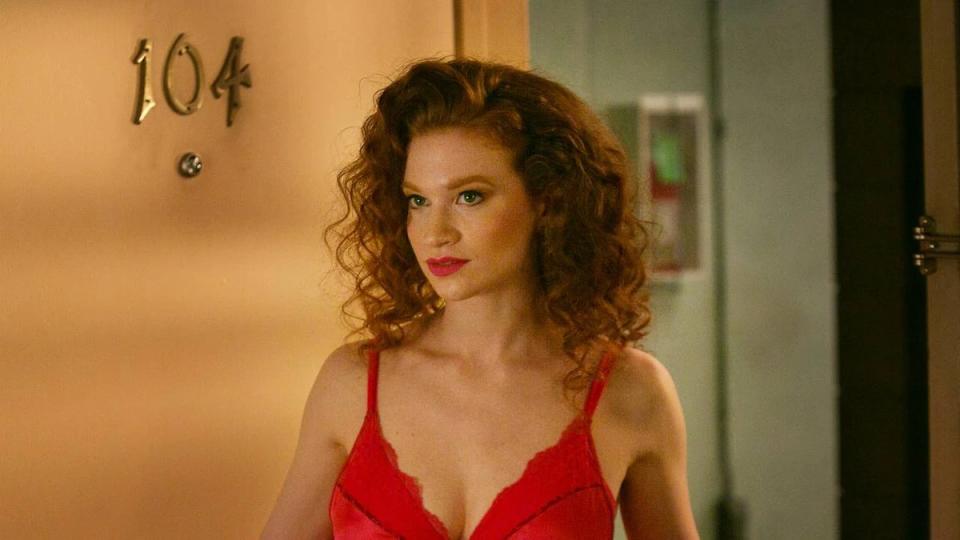
The Duplass brothers unleash otherworldly magic in “Room 104,” a low-budget anthology that’s arguably best likened to “The Twilight Zone” but exists in a category unto itself. Set in the same motel room across 48 episodes, the genre-blending experiment tasked four seasons’ of filmmakers with transporting audiences into an entirely new story world without exiting the room. From sci-fi adventures and ghost stories to cartoons and even a documentary, “Room 104” broke mold in ways no comment card could ever capture. Mark Duplass, Jay Duplass, Mel Eslyn, Sydney Fleischmann, and Xan Aranda executive produce, with a breathtaking score and original songs from Julian Wass. —AF
10. “The Leftovers”

To have a show about the end of the world engender so much humanity amongst the sadness is an accomplishment worth celebrating. “The Leftovers” is a simple love story in a bleak time, cushioned by the tenuous family connections that helped each of these two central figures cope with varying degrees of loss. Their specific tragedies may be invented ones, but the boldness of the series’ storytelling only served to underline how their struggles connected a universal understanding of what it means to grieve something that’s gone. From the fierce, charged conversations that only took two people baring their souls to create something explosive, to the transformative “International Assassin” trilogy of episodes, “The Leftovers” took an unconventional approach to its source material and turned it into legend. —SG
9. “Watchmen”
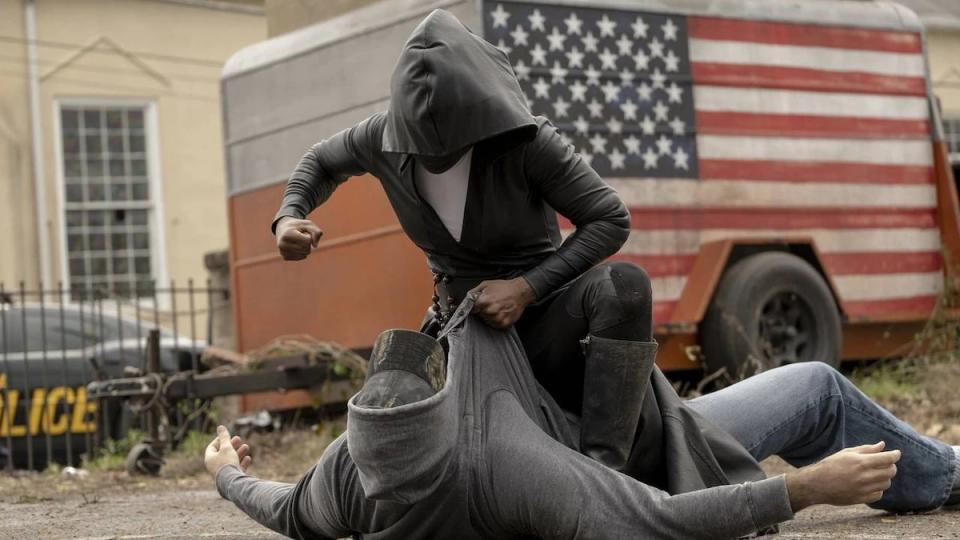
Adapted from the Alan Moore comic of the same name, Damon Lindelof’s “Watchmen” blew audience expectations out of the water with a strongly grounded — and decidedly terrifying — new take on a familiar universe with stars Regina King, Yahya Abdul-Mateen II, Louis Gosset Jr., Jovan Adepo, Jean Smart, and more. It won Best Limited Series at the 2020 Emmy Awards.
“Looking beyond the veils people share with the world, ‘Watchmen’ finds fundamental truths about an America divided by a lack of faith in itself, its people, and its institutions,” writes IndieWire’s Ben Travers. “The series’ scope is astonishing given its subject matter, and even more so given its relentless entertainment value. Through six episodes, ‘Watchmen’ has already provided a bounty of intelligent theories to study and debate, but it’s designed to be one helluva good time, as well.” —AF
8. “Band of Brothers”
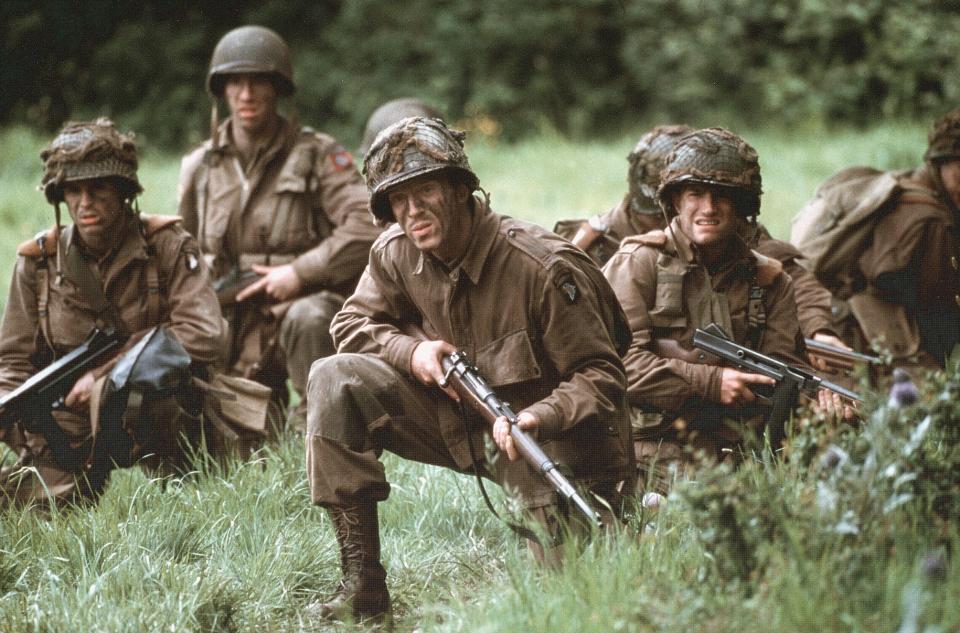
War is always a delicate experience to capture in a fictional setting. By incorporating interviews with veterans, telling the story of real-life individuals of Easy Company’s Paratrooper division helped “Band of Brothers” lend authenticity to a television event already brimming with gravitas. But the true strength of the series rested in its ensemble, a collection of actors with some familiar faces and others who would later come to highlight the TV landscape in other venues. The swells of Michael Kamen’s score may evoke a particular sense of heroism, but the best moments of this series showed ordinary men being called upon to do extraordinary things. Through the vulnerability of performances from folks like David Schwimmer and Damian Lewis, delivered in a visual template set by executive producer Steven Spielberg’s “Saving Private Ryan,” it condensed a entire battalion’s worth of experiences into 10 hours and still made it feel like a story that had time to breathe. —SG
7. “I May Destroy You”
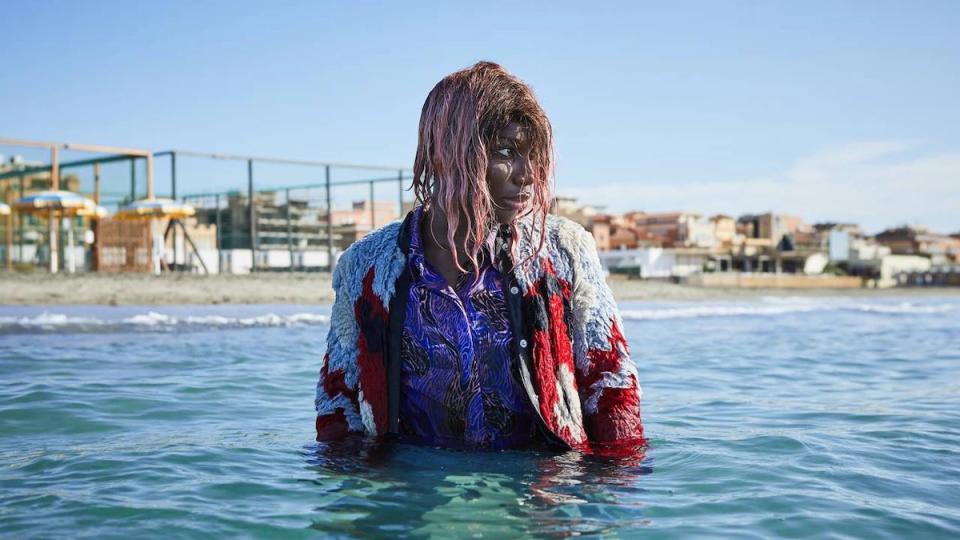
Earning eight nominations and two wins at the 2021 Emmy Awards, “I May Destroy You” expertly explored sexuality, dating, consent, and trauma through the unconventional story of a viral writer recovering from assault. Created, written, directed, and produced by star Michaela Coel, the 12-part series has been praised for its feminist message, delivered with searing specificity, and its fearless commitment to vividly portraying difficult subject matter. Weruche Opia and Paapa Essiedu also star. —AF
6. “Barry”
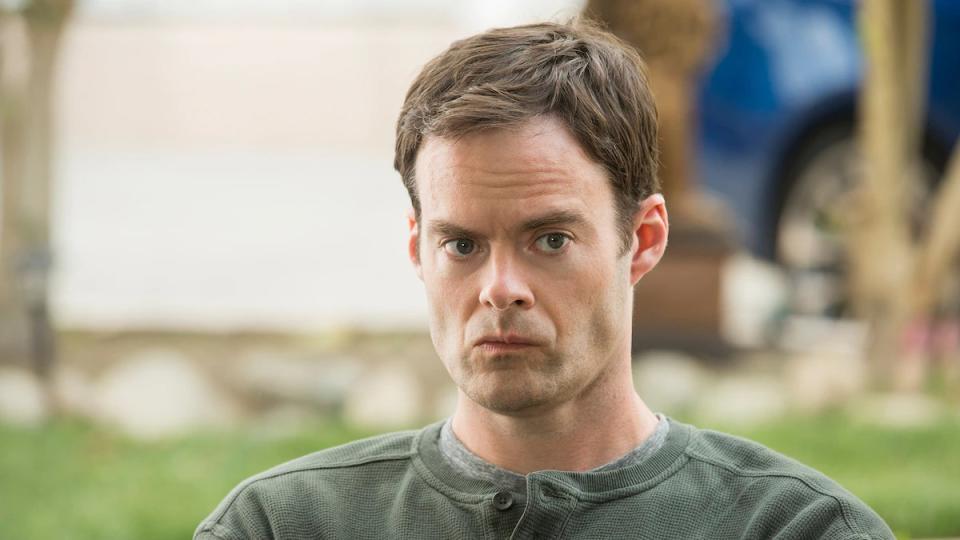
In Bill Hader and Alec Berg’s masterful “Barry,” a hitman chasing a mark through Los Angeles decides he’d rather be an actor instead. Entering its fourth season sometime next year, the series that started off sounding like a bad “Saturday Night Live” sketch has since matured into an edge-of-your-seat thrill ride that’s not only a staggeringly well written study of its tortured main character, but boasts an ensemble cast that consistently leads the Emmys’ comedy acting race. Hader, Henry Winkler, Stephen Root, Anthony Carrigan, and Sarah Goldberg have all been nominated for their performances, with Winkler and Hader winning in 2018 and 2019 respectively. —AF
5. “The Larry Sanders Show”
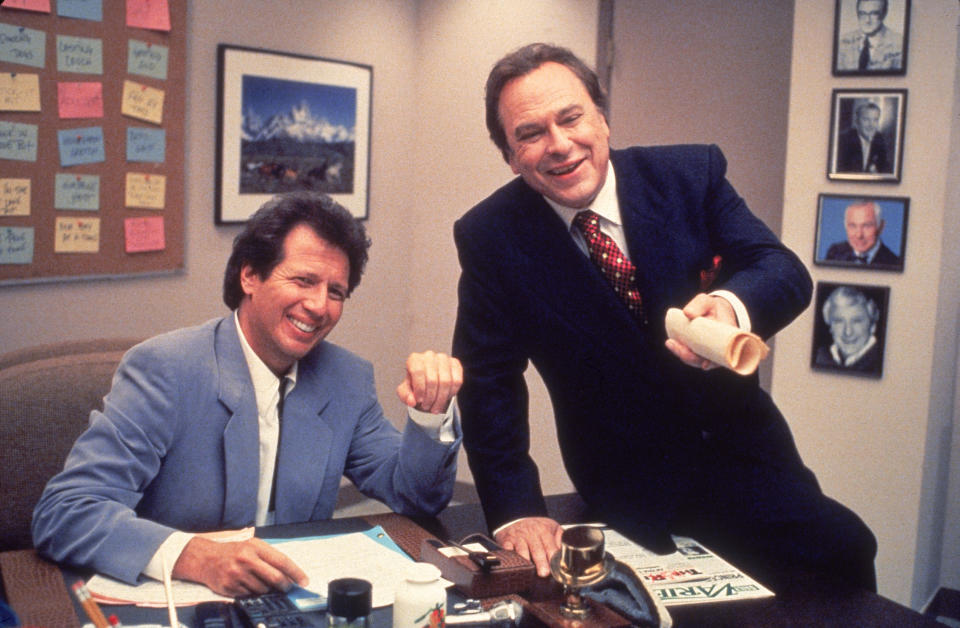
Hey now! There have been countless Hollywood parodies over the years, including others on HBO. But none have ever been as biting or realistic as “The Larry Sanders Show,” because perhaps no other show has better captured the ego, self-hate, insecurity and fear that actually drives this business. The late, great Garry Shandling had already become a cable pioneer with Showtime’s “It’s Garry Shandling’s Show” when he came up with “The Larry Sanders Show” as a way to satirize his experience as a “Tonight Show” guest host and standup comedian. Jeffrey Tambor played sidekick Hank Kingsley and Rip Torn was producer Artie, while the show also featured Janeane Garofalo, Mary Lynn Rajskub, Jeremy Pieven, and Bob Odenkirk in major roles. “The Larry Sanders Show” legacy also includes the parade of guest stars playing heightened versions of themselves. That’s commonplace now, but it was always surprising to see stars being self-deprecating on “Larry Sanders” (including David Duchovny, who famously played himself as having a massive crush on Larry). No flipping! —MS
4. “Succession”

Created by Jesse Armstrong, “Succession” can be tidily described as the Bad People Olympics. Anchored in a terrifying centerpiece performance from Brian Cox, the searing satirical drama follows media titan Logan Roy’s attempts to secure his insidious legacy. Jeremy Strong, Sarah Snook, Kieran Culkin, and Alan Ruck portray the four main Roy children, with Nicholas Braun, Matthew Macfadyen, J. Smith-Cameron, and more rounding out the cast. At the Emmys, “Succession” has earned repeat acclaim for its acting, directing, writing, editing, and score. —AF
3. “Chernobyl”
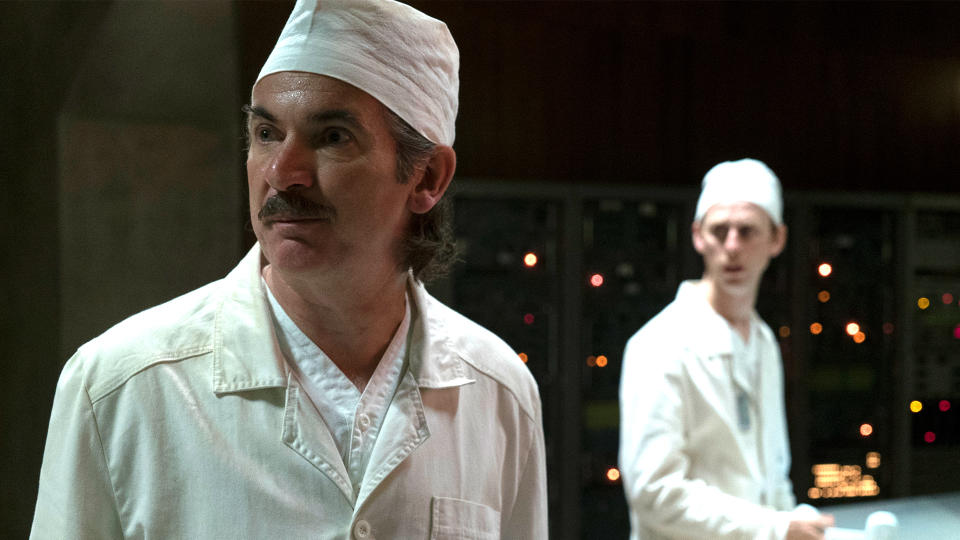
Writer-creator Craig Mazin and director Johan Renck put HBO audiences through hell with their “Chernobyl” miniseries: a staggeringly realistic dramatization of the 1986 Ukrainian nuclear disaster told in five parts. Winner of the 2019 Emmy for Outstanding Limited Series — as well as Outstanding Directing and Outstanding Writing — the series’ sprawling ensemble cast includes Stellan Skarsg?rd, Jared Harris, Emily Watson, Jessie Buckley, Paul Ritter, and more. “Each nauseating moment, be it a shot of decaying human flesh or a decision made for the wrong reasons, has a purpose — and pays back the viewer for their investment,” writes IndieWire’s Ben Travers. “‘Chernobyl’ is a stunning dramatization, and one worth admiring on many levels.” —AF
2. “The Sopranos”
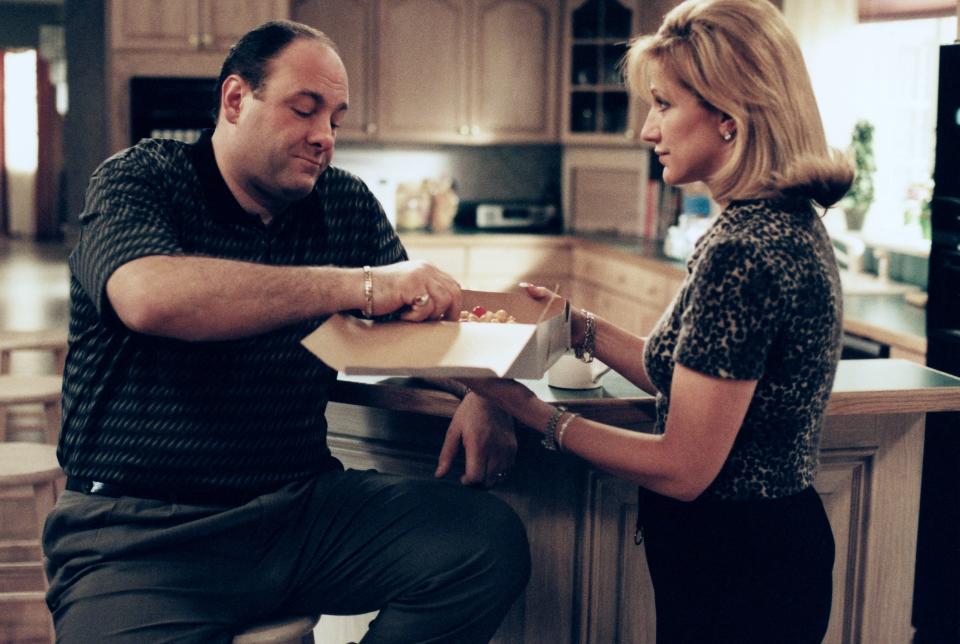
It’s almost easy now to forget how revolutionary “The Sopranos” was: to HBO, to pop culture, to the talent involved, to the industry, and to the way we watch television. Cable TV had produced original scripted programming in the past, but never at this scale — or with this kind of audience. Tony Soprano, played by James Gandolfini in the role of a lifetime, scared the networks — as he should have. “The Sopranos” was an early nail in the broadcast networks’ coffin, inspiring this modern era of peak TV as every cable network and streaming service began looking for its own breakthrough show (and HBO became a go-to destination for top-tier talent). From a storytelling perspective, David Chase’s story of a New Jersey mobster visiting a therapist (Lorraine Bracco) in an effort to balance the demands of his life ushered in an age of the anti-hero, and also helped re-popularize episodic serialized television, breaking the stranglehold that procedural dramas had on TV. “The Sopranos” ultimately won 21 Primetime Emmys, and became the first cable series to be named Outstanding Drama in 2004. Plus, “The Sopranos” ended with one of the most infamous — and highly debated — series finales of all time, when the show just abruptly —MS
1. “The Wire”
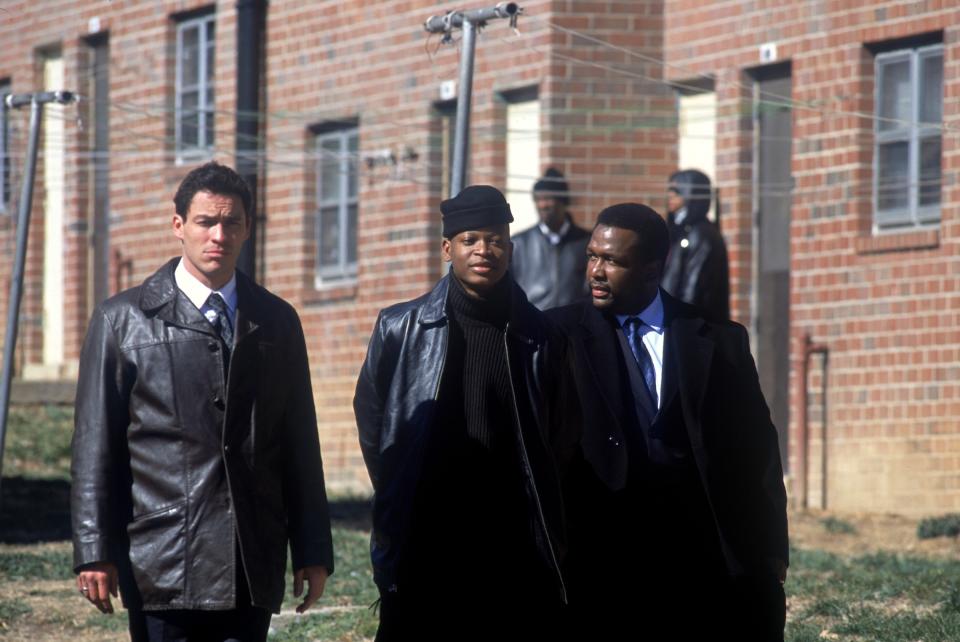
David Simon’s magnum opus is one of the most thoroughly constructed and physically detailed looks at American life that American TV has ever put forth. But “The Wire” also helped teach generations of TV viewers how to approach televised storytelling of that caliber. The season-as-chapter approach was a fresh concept, and it showed that a TV series was more than just a handful of sets and some series regulars locked into a single viewpoint. As a result, HBO proved that gambling on shows that don’t have an established star at the head or that take place outside of the familiar New York and LA environs could be an artistic boon, something that would have a lasting legacy beyond its airdate. With the eye of a journalist, the ear of a novelist, and the heart of a city, “The Wire” shepherded Baltimore’s onscreen identity and established a blueprint for all the shows that came in its wake. —SG
Best of IndieWire
Sign up for Indiewire's Newsletter. For the latest news, follow us on Facebook, Twitter, and Instagram.
Solve the daily Crossword

